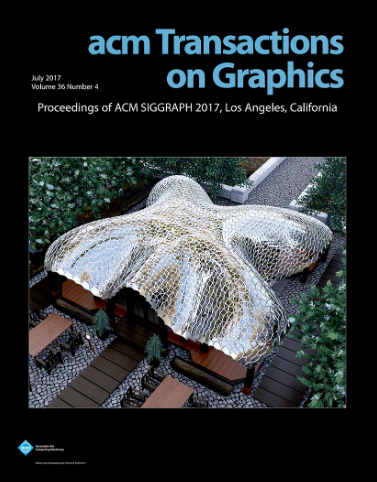RTI应用中精确重照明的神经反射场模型
IF 9.5
1区 计算机科学
Q1 COMPUTER SCIENCE, SOFTWARE ENGINEERING
引用次数: 0
摘要
反射变换成像(RTI)是一种计算摄影技术,该技术从固定的角度以不同的光方向获取物体。目的是估计每个点的光传输函数,以便物体可以以物理精确的方式交互重亮,揭示其表面特征。在本文中,我们提出了一种新的RTI方法,将表面反射率描述为一种隐式神经表征,作为特定物体的“可照明图像”。我们建议用神经反射场(NRF)模型来表示光传输函数,为其提供像素坐标、光方向和编码邻域中逐像素反射率的潜在向量。这些向量,在训练期间计算,允许比纯隐式表示(即,仅依赖于位置编码)更准确的重光照,使NRF能够处理复杂的表面阴影。此外,它们可以有效地存储在学习到的NRF中,用于压缩和传输。作为额外的贡献,我们提出了一个新的合成数据集,其中包含使用基于物理的渲染软件创建的各种形状和材料的对象。一个广泛的实验部分表明,所提出的NRF准确地模拟了合成和现实世界场景中具有挑战性的数据集的光传输函数。本文章由计算机程序翻译,如有差异,请以英文原文为准。
A Neural Reflectance Field Model for Accurate Relighting in RTI Applications
Reflectance Transformation Imaging (RTI) is a computational photography technique in which an object is acquired from a fixed point-of-view with different light directions. The aim is to estimate the light transport function at each point so that the object can be interactively relighted in a physically-accurate way, revealing its surface characteristics. In this paper, we propose a novel RTI approach describing surface reflectance as an implicit neural representation acting as a ”relightable image” for a specific object. We propose to represent the light transport function with a Neural Reflectance Field (NRF) model, feeding it with pixel coordinates, light direction, and a latent vector encoding the per-pixel reflectance in a neighbourhood. These vectors, computed during training, allow a more accurate relighting than a pure implicit representation (i.e., relying only on positional encoding) enabling the NRF to handle complex surface shadings. Moreover, they can be efficiently stored with the learned NRF for compression and transmission. As an additional contribution, we propose a novel synthetic dataset containing objects of various shapes and materials created with a physically based rendering software. An extensive experimental section shows that the proposed NRF accurately models the light transport function for challenging datasets in synthetic and real-world scenarios.
求助全文
通过发布文献求助,成功后即可免费获取论文全文。
去求助
来源期刊

ACM Transactions on Graphics
工程技术-计算机:软件工程
CiteScore
14.30
自引率
25.80%
发文量
193
审稿时长
12 months
期刊介绍:
ACM Transactions on Graphics (TOG) is a peer-reviewed scientific journal that aims to disseminate the latest findings of note in the field of computer graphics. It has been published since 1982 by the Association for Computing Machinery. Starting in 2003, all papers accepted for presentation at the annual SIGGRAPH conference are printed in a special summer issue of the journal.
 求助内容:
求助内容: 应助结果提醒方式:
应助结果提醒方式:


